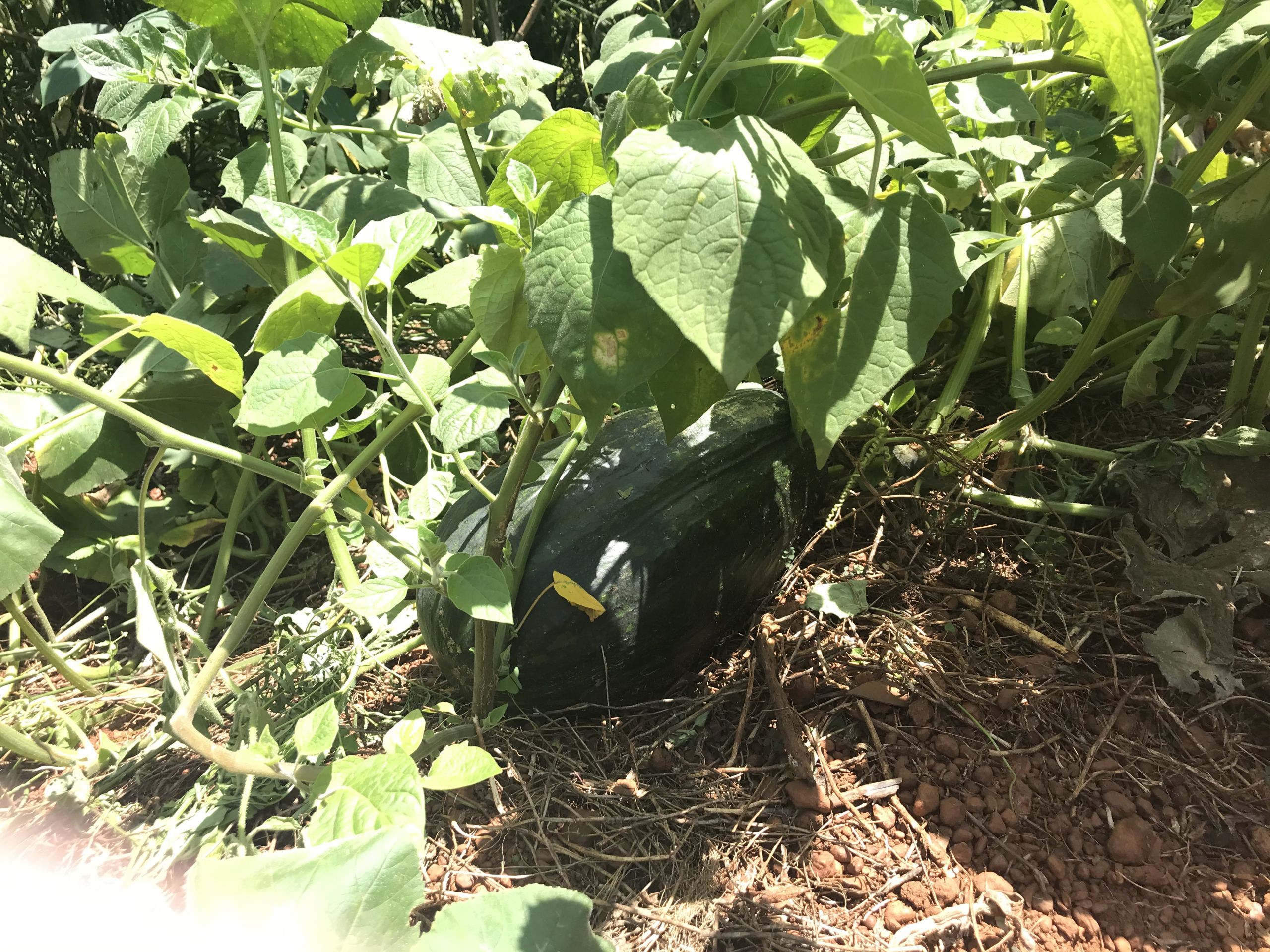Can village nutrition schools reduce widespread malnutrition?
As Rwanda battles to overcome high levels of malnutrition, one program is helping village mothers train each other to bridge the nutrition knowledge-gap.
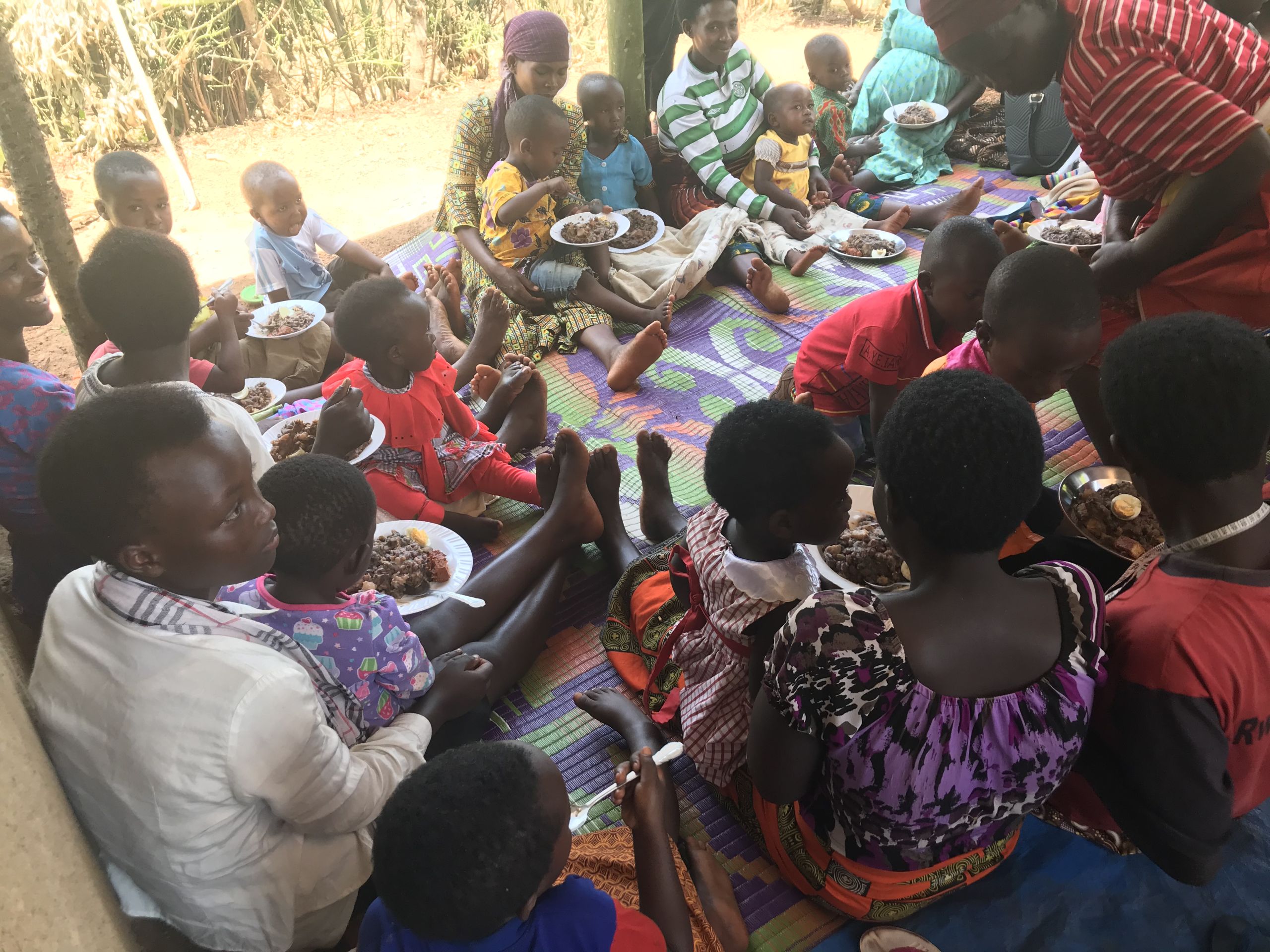
This article is part of our Focus on: Improving Nutrition series, powered by DSM, exploring innovative solutions to improve nutrition, tackle malnutrition, and influence policies and funding.
KIGALI, Rwanda — Walking from row to row of her vegetable garden, Sarah Myirarulando proudly lists the numerous plants she has grown. Onions, potatoes, mangoes, peppers, and sweet potatoes all sprout from outside her small home in Kibande village on the outskirts of Kigali, Rwanda. But that wasn’t the case five years ago.
“We used to have to save money to buy vegetables,” Myirarulando explained, she said that the access to fresh produce has helped to improve her family’s health.
In Rwanda, 38% of children under 5 are chronically malnourished or stunted, according to the latest available data from 2015. While Rwanda has been working to achieve middle-income country status through its Vision 2020 plan, malnutrition has remained a hurdle. To make it a priority, the government has produced multiple policies and plans to improve food security and nutrition, including community-based food, nutrition, and environmental health programs.
While poverty and a lack of food are contributing factors to malnutrition — 38.2% of Rwandans live below the poverty line — the causes are cross-sectoral, said Alemayehu Gebremariam, chief of party at Catholic Relief Services for Gikuriro, an integrated nutrition program.
“At the national level [those causes] can be translated into structural issues: land availability, gender issues, policy issues, which all lead to malnutrition,” Gebremariam said.
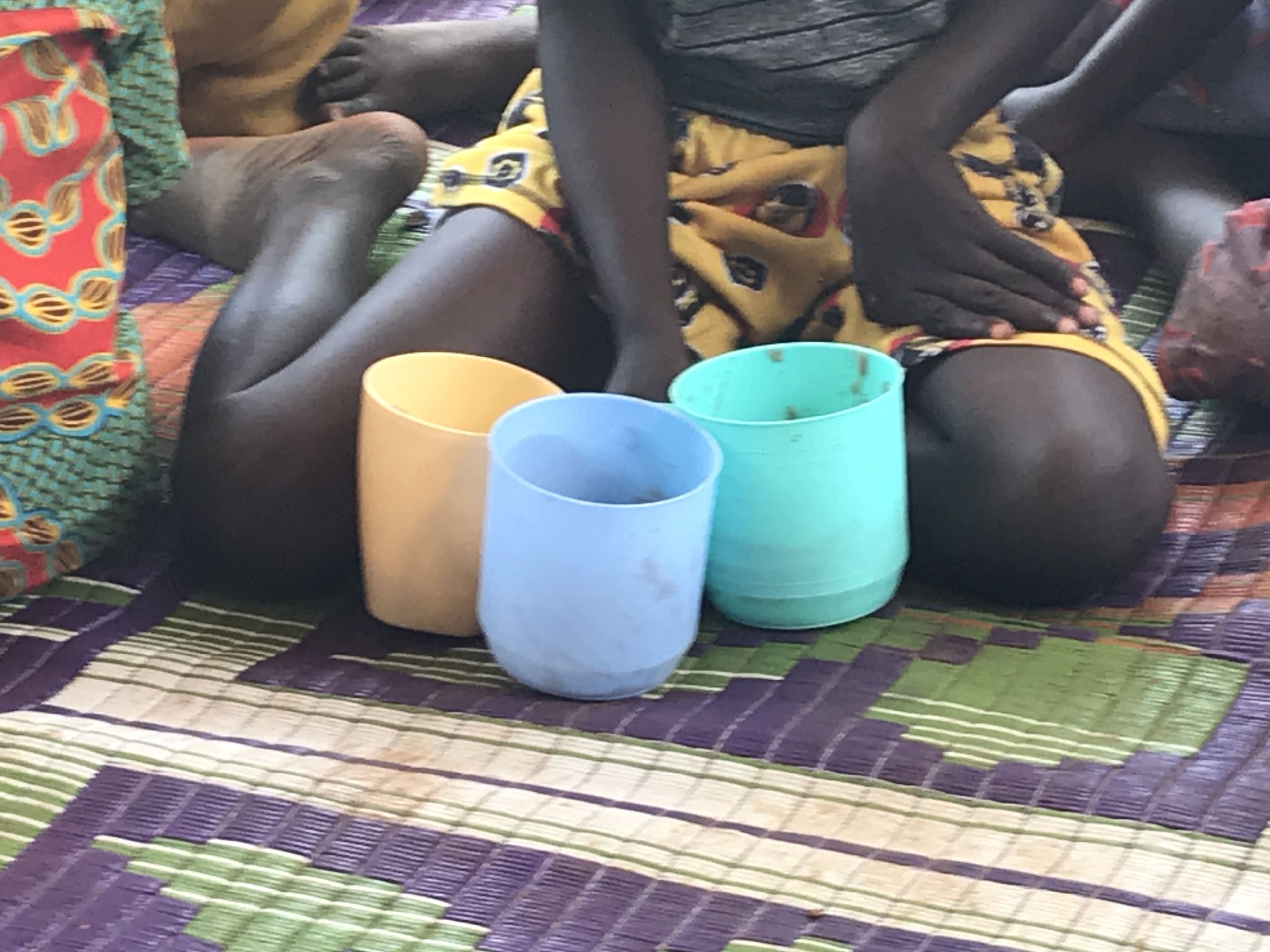
Beakers of porridge
Beakers of porridge
He believes a lack of education around nutrition — in particular around the frequency with which children need to be fed, and the vital food groups — poses a big problem.
“A child can succumb to malnutrition even if a household has good income so it’s because of the knowledge gap,” Gebremariam noted.
“Educated mothers [the main caregivers in most households] have a better chance of preventing malnutrition.”
John Hoddinott, professor of food and nutrition economics and policy at Cornell University, agreed.
“Mothers don’t always have the best information about the types of foods they should supply to their children, when they should exclusively breastfeed, when they should shift to introducing complementary foods so ... it’s important to educate mothers,” he said.
That’s where village nutrition schools come in.
Enter: Village nutrition schools
Hosted in a villager’s home, these nutrition schools were established through the Gikuriro program, implemented by CRS and SNV Netherlands Development Organisation and funded by the U.S. Agency for International Development.
The project aims to support the government’s nutrition and environmental health programs, improve nutritional outcomes, and promote good water, sanitation, and hygiene practices to prevent diarrheal disease, which can cause malnutrition.
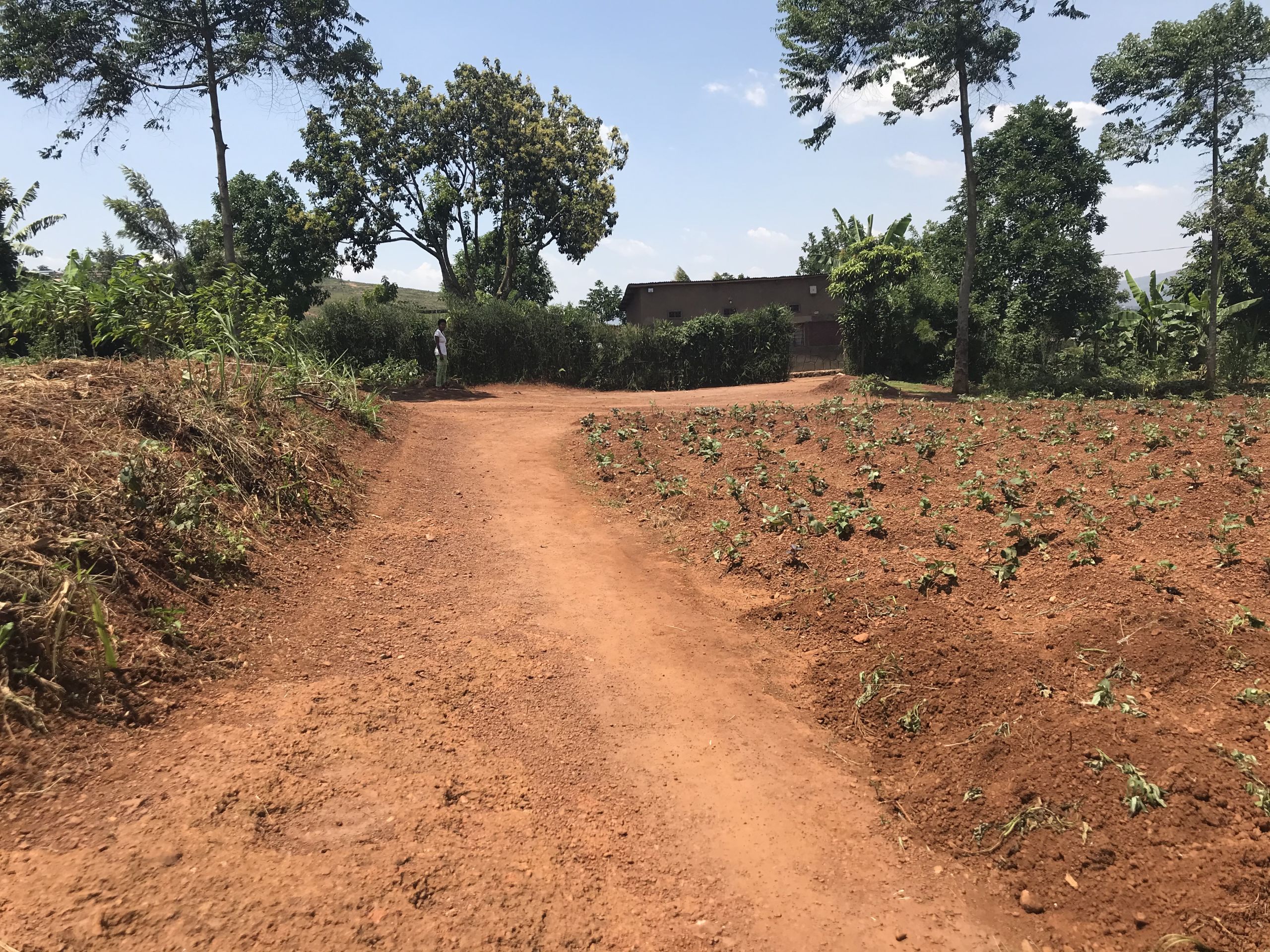
“If you don’t respond in an integrated, multisectoral way, the chances are you may not address malnutrition,” Gebremariam said, explaining that other elements of the program include field learning schools for farmers, community health clubs, and savings groups. Diverse interventions are needed to respond to the diverse underlying causes of malnutrition.
Allison Oman, senior regional policy adviser at the World Food Programme, also highlighted that prevention is a far more sustainable approach than trying to treat malnutrition once it occurs.
Run by two volunteer community health workers and a “model mother” — nominated by the community to receive ongoing training and on-the-job mentoring — the village nutrition schools initially run for 12 days before becoming monthly meetups.
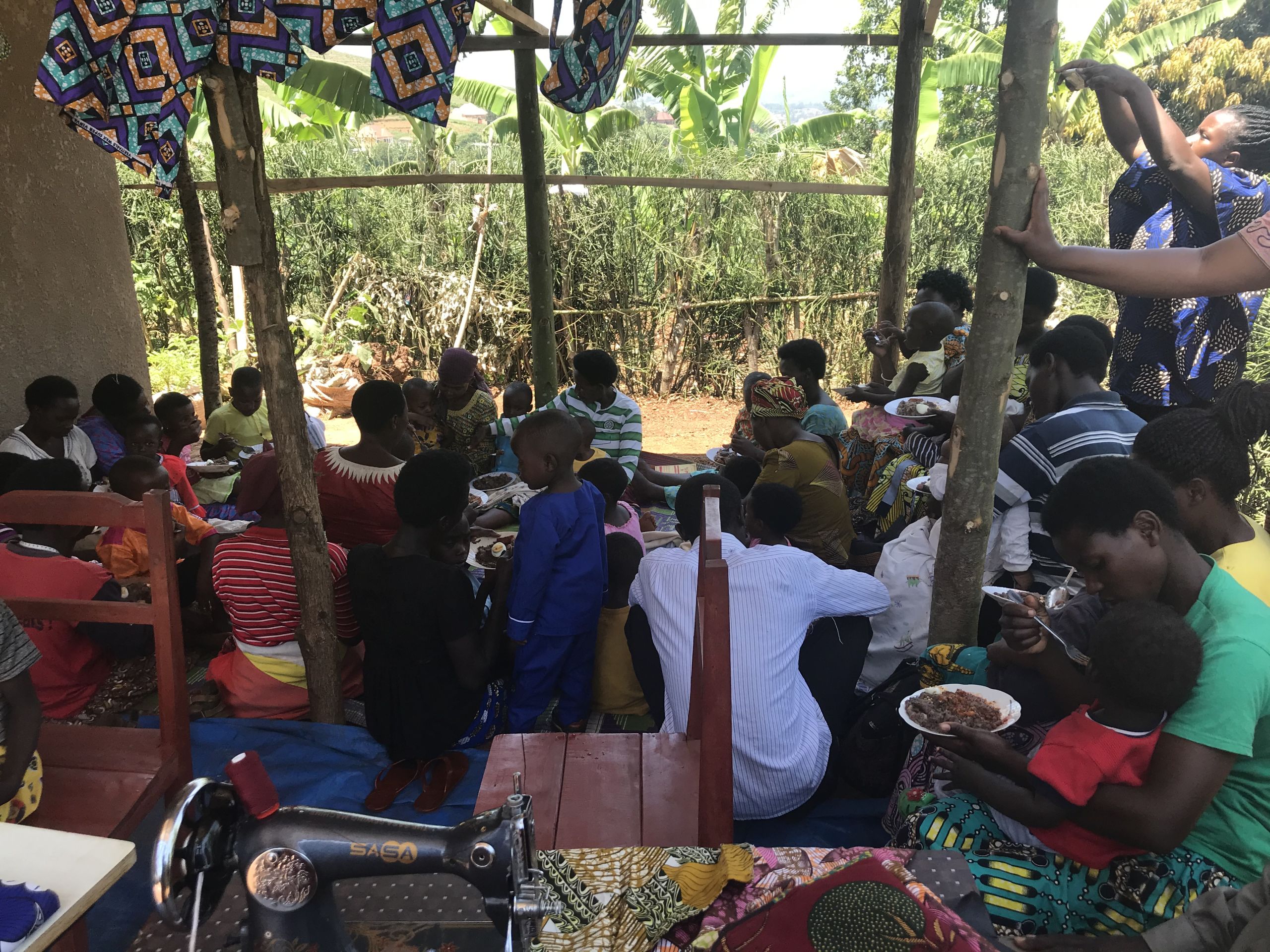
Mothers, who bring their children under 5, take part in cooking demonstrations, nutrition counseling, and child growth monitoring.
Myirarulando owes her vegetable garden to one such school. For almost five years, she and the other women in the Kibande community — children in tow — have been gathering at the house of Bertilde Musabyi Mana, her next-door neighbor.
Under Mana’s supervision as the model mother, the women have learned how to grow their own vegetables and make meals comprised of various vital food groups.
Outside the house sits a pyramid structure with food slotted into the different compartments to remind the women of the essential components of a healthy diet.
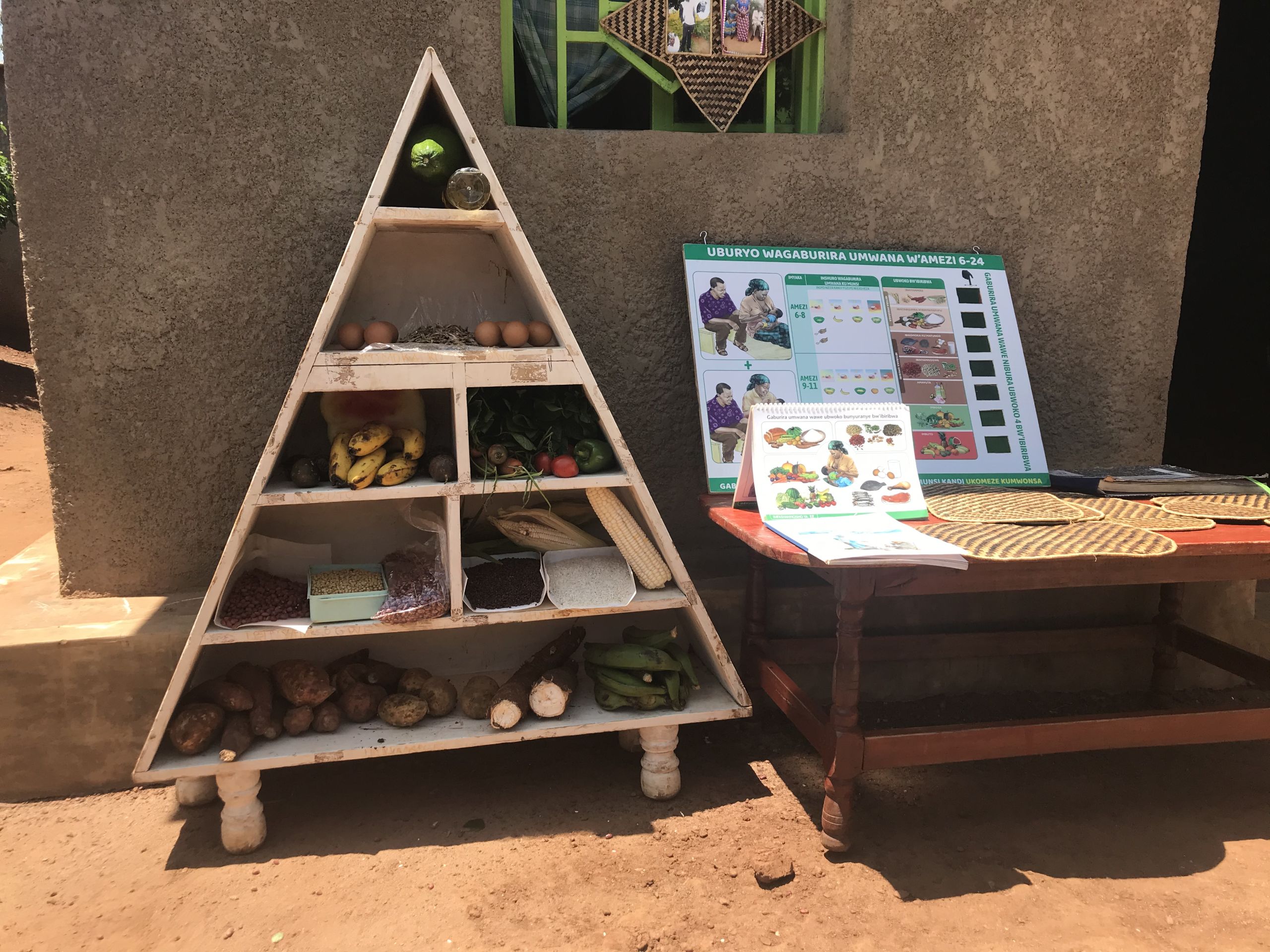
This pyramid helps to educate families on the different food groups that comprise a healthy diet.
This pyramid helps to educate families on the different food groups that comprise a healthy diet.
Escaping the summer heat under the awning of Mana’s house, around 15 children sit amongst their mothers’ legs, each guzzling a beaker of porridge before plates of stew, potatoes, and egg are dished out to the women who alternate between taking a mouthful themselves and spooning some to the children.
Following a cooking demonstration, they collectively prepare the meal.
Prior to the schools — which are present in eight districts across Rwanda — Gebremariam said many children would just be fed carbohydrates.
The Gikuriro program is not alone in its approach.
Laos’ Ministry of Agriculture and Forestry has adopted a similar method, training women volunteers to discuss nutrition and hygiene issues with other villagers, assess food and nutrition gaps, plan small agricultural interventions, and practice low-cost nutritious recipes with pregnant and nursing mothers.
“Many countries have versions of training and mother-to-mother support groups to help demonstrate meals that can be made of locally-available foods,” Oman said, adding that small changes can make a huge difference.
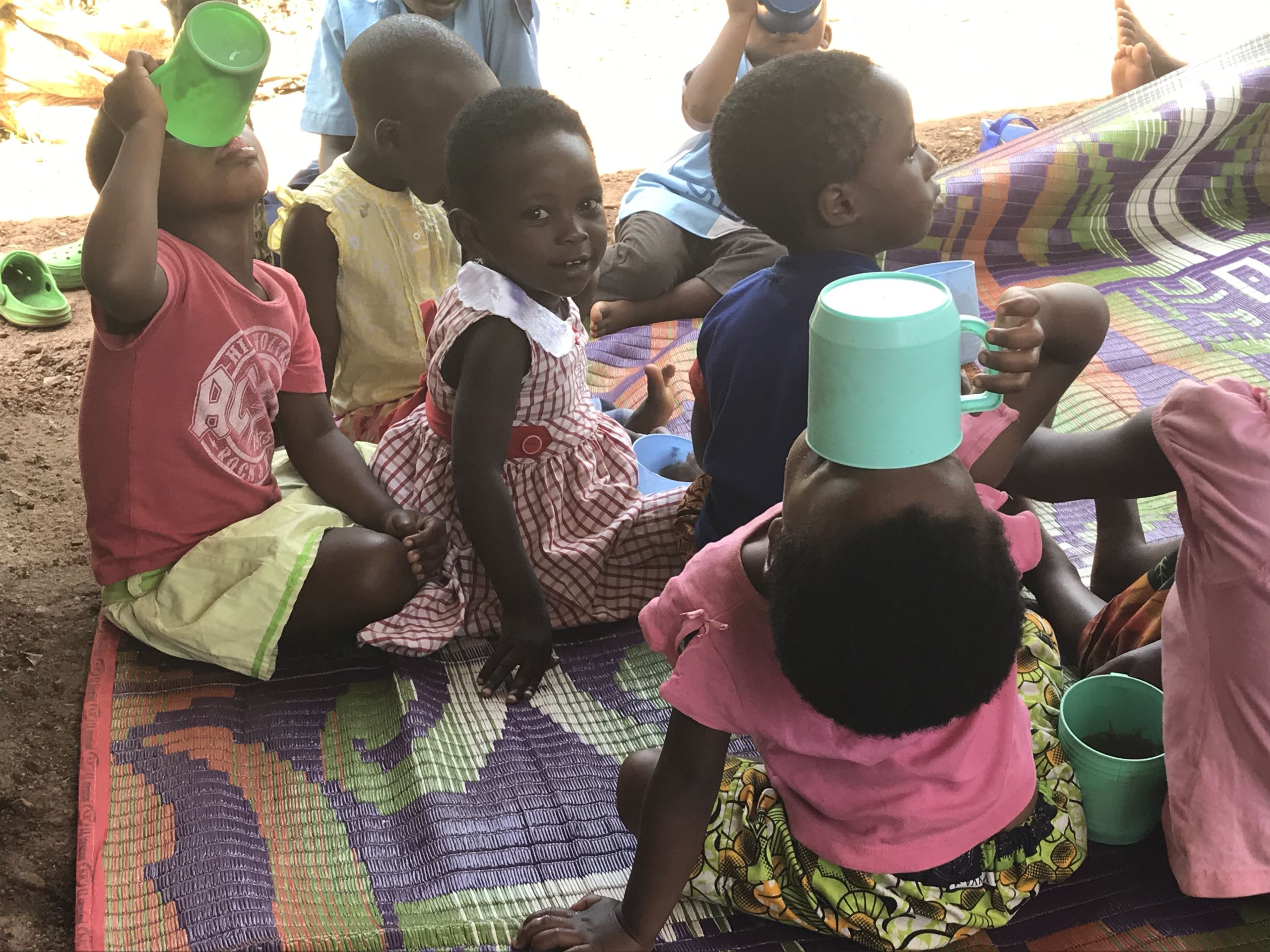
Children at a village nutrition school.
Children at a village nutrition school.
“Mothers learning to steam rather than over boil vegetables, soaking beans before cooking to reduce cooking time and fuel consumption, the addition of animal protein such as eggs or fish into children’s diets — these changes can greatly increase the nutritional value of the meal.”
In Kibande, many of the mothers, like Myirarulando, who joined the group at its inception in 2015, now know how to make nutritious meals and have their own thriving vegetable gardens that allow them to sell produce for extra income. But being close to the city, people move and new mothers and children continue to join, Mana said.
Once the program comes to an end this year, Gebremariam hopes the communities will keep the schools going, especially since many have evolved to incorporate other income-generating skills such as tailoring and craft making.
“We can’t stop because it has been very beneficial to our children,” Mana said, adding that when the school first started, four of the children in the group were malnourished. That’s no longer the case, she said — calling it their first achievement.
The second is having other community health workers visit to learn from their methods.
Mana’s isn't the only house hosting such a school. Gikuriro has launched over 1,800 village nutrition schools across Rwanda and CRS said it has rehabilitated 6,600 children from acute malnutrition.
Lasting impact
The overall impact of Gukiriro’s village nutrition schools is up for debate. A year-long evaluation in 74 villages by Innovations for Poverty Action found that it did not improve household dietary diversity, child and maternal anemia, or child growth over that time period — although it did increase savings among villagers substantially.
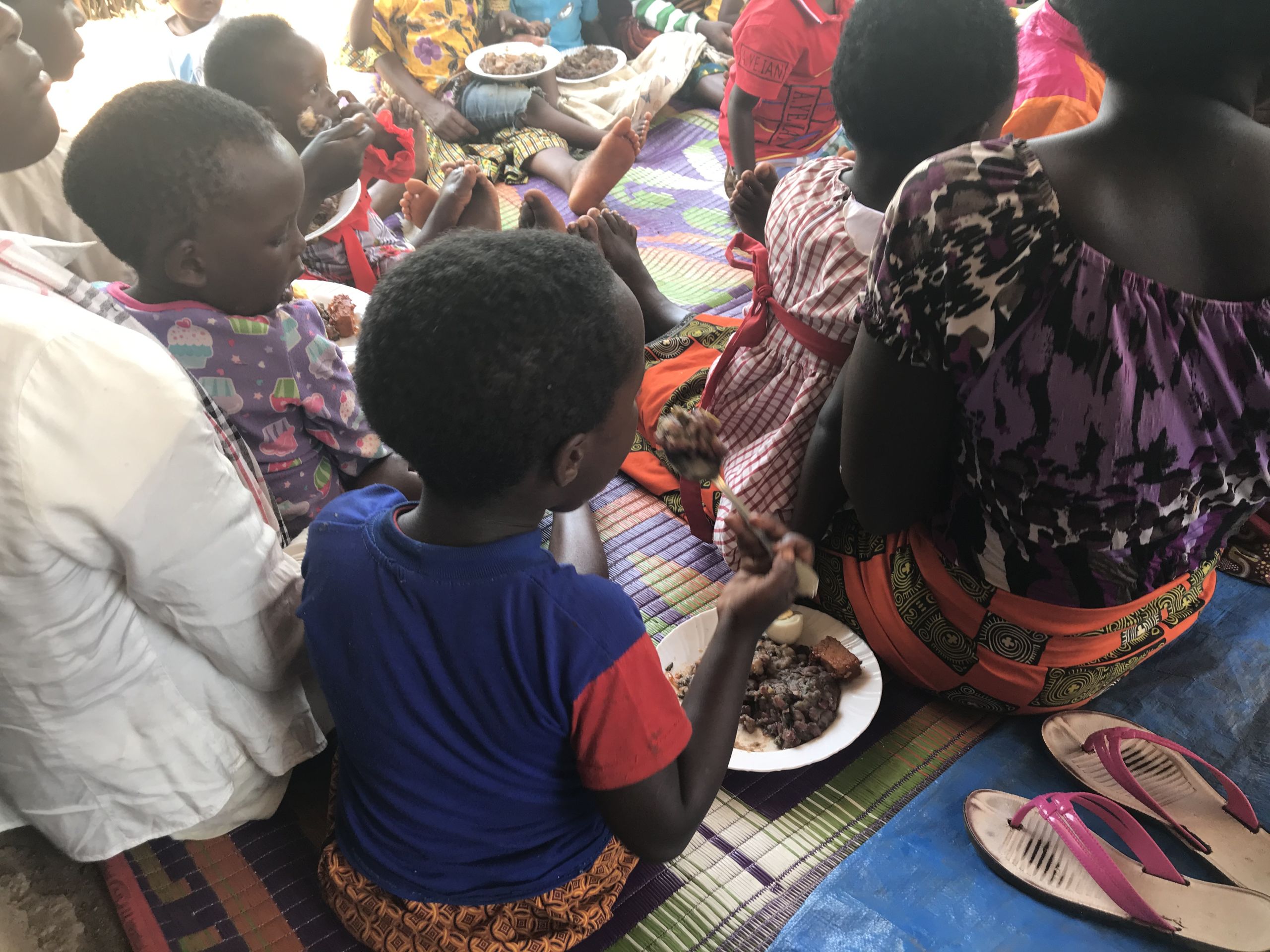
The researchers found that a cash transfer of $500 to households was more effective in improving nutrition outcomes, but they also noted Gukiriro’s much lower cost and the potential for long-term impact outside the scope of the study.
“If the ultimate metric of success for any development program is sustainability and behavior change, simply giving people money without addressing these underlying issues isn’t enough to create the lasting change we all hope for … The reality is that no one solution is a silver bullet,” Gebremariam said.
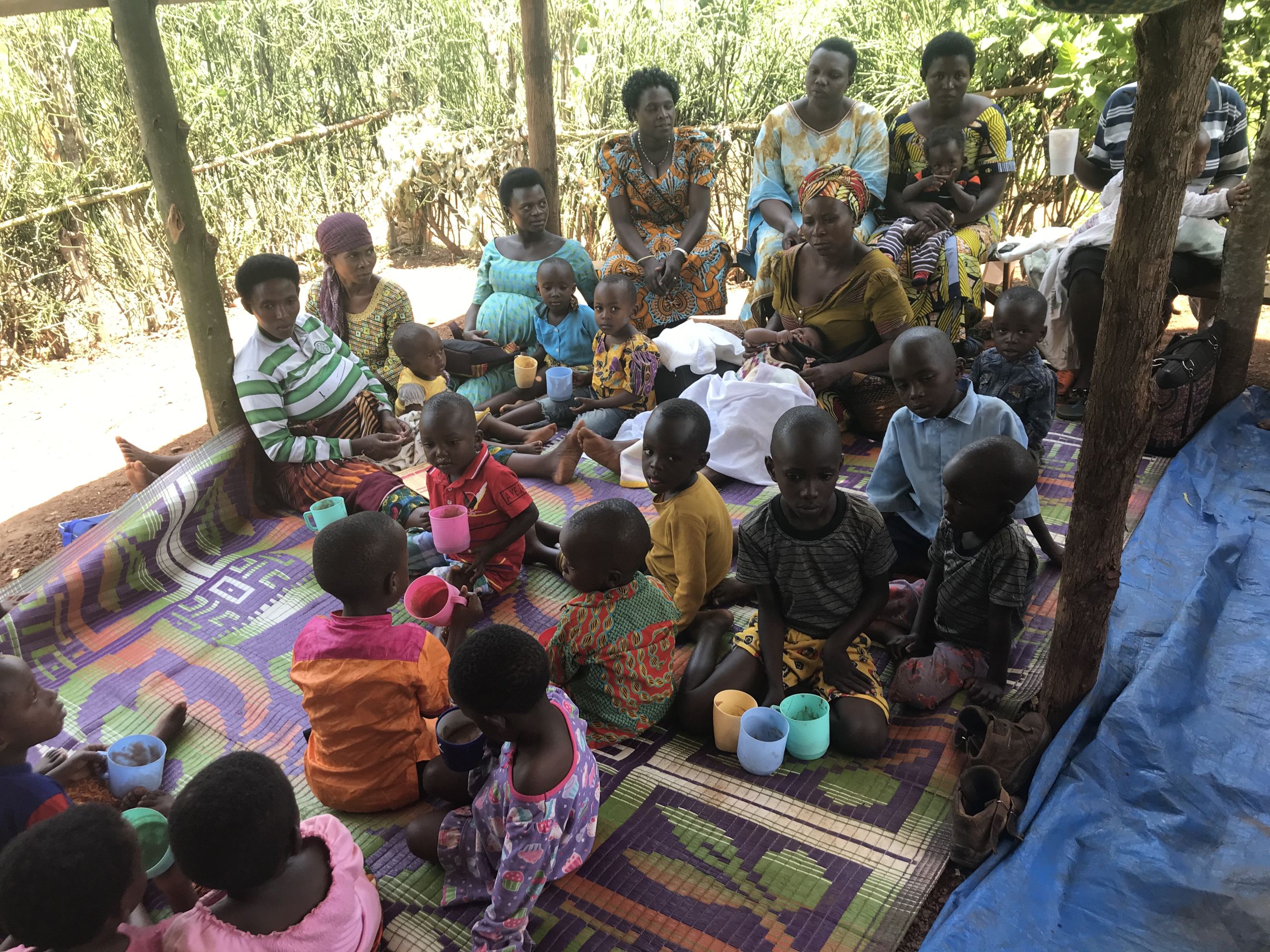
Mothers with their children at a village nutrition school.
Mothers with their children at a village nutrition school.
The process hasn’t been without its challenges, though. Behavior change has been slow, Gebremariam said, because it is rooted in sociocultural beliefs that need challenging.
These range from gender norms — women often receive less education yet are the main caregivers — culturally accepted child care practices, and food taboos caused by cultural and religious beliefs.
Hoddinott said that to change behavior around nutrition in a community, it’s important to educate others living in the households in a way that resonates. For example, he highlighted the important role that mothers-in-law play in certain communities, in particular in Southeast Asia, and the influence they can have on the feeding patterns in a household.
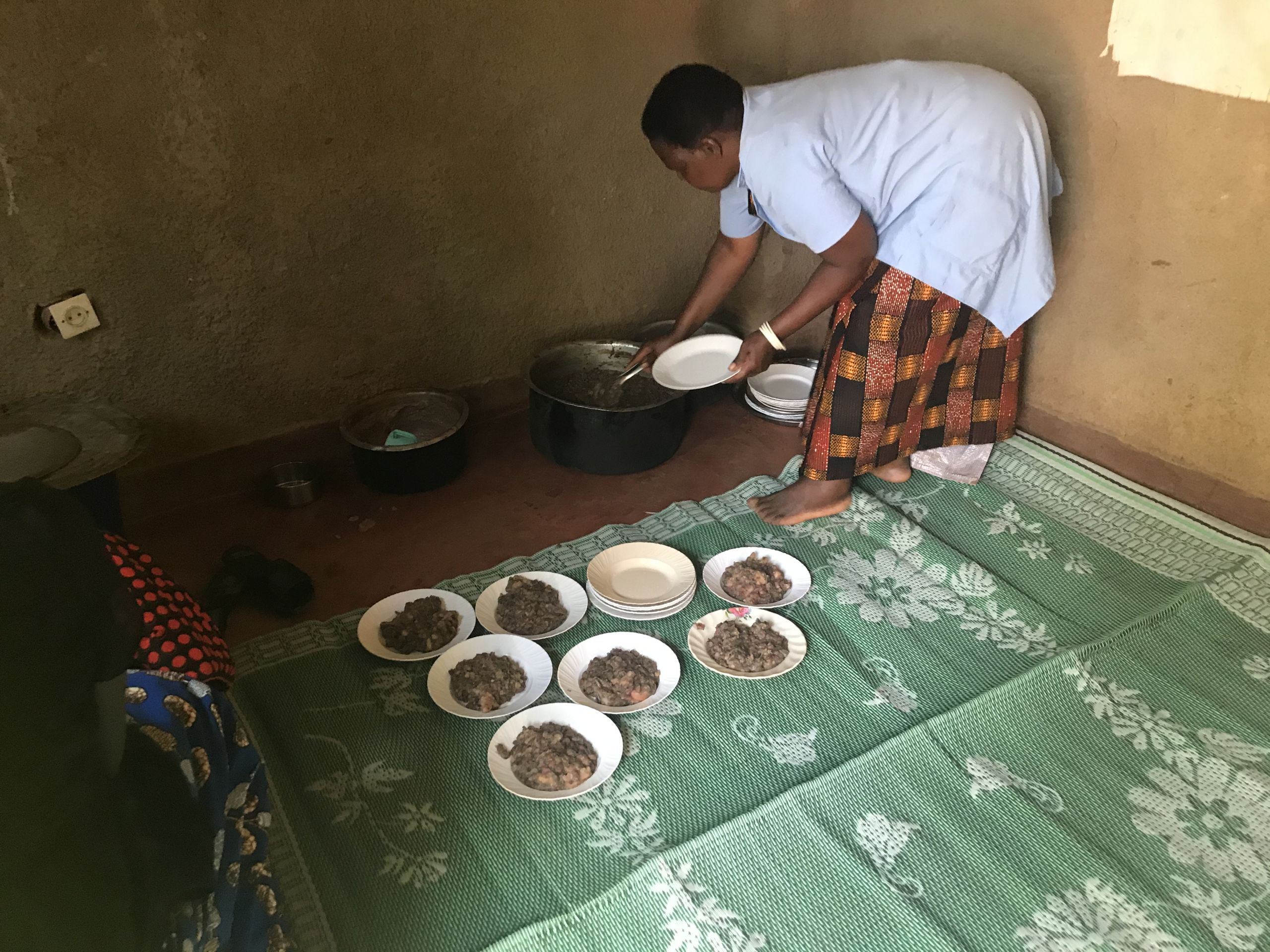
A VNS staff member serves up a meal.
A VNS staff member serves up a meal.
“A mother says: ‘I’m going to introduce this novel food to my child.’ The mother-in-law says: ‘why are you doing that? I didn’t do that when I was feeding your husband and he turned out just fine,’” Hoddinott explained, emphasizing the importance of driving behavior change across the whole community.
And while Oman said that education and knowledge building are often low-cost, high-impact interventions, she warned that in poor communities, knowledge is only one small piece of the problem.
“There is a need to include cash or food transfers in food-insecure households to ensure that families have more than just knowledge, but also the food to feed their families,” she said.
This focus area, powered by DSM, is exploring innovative solutions to improve nutrition, tackle malnutrition, and influence policies and funding.
Visit the Focus on: Improving Nutrition page for more.
